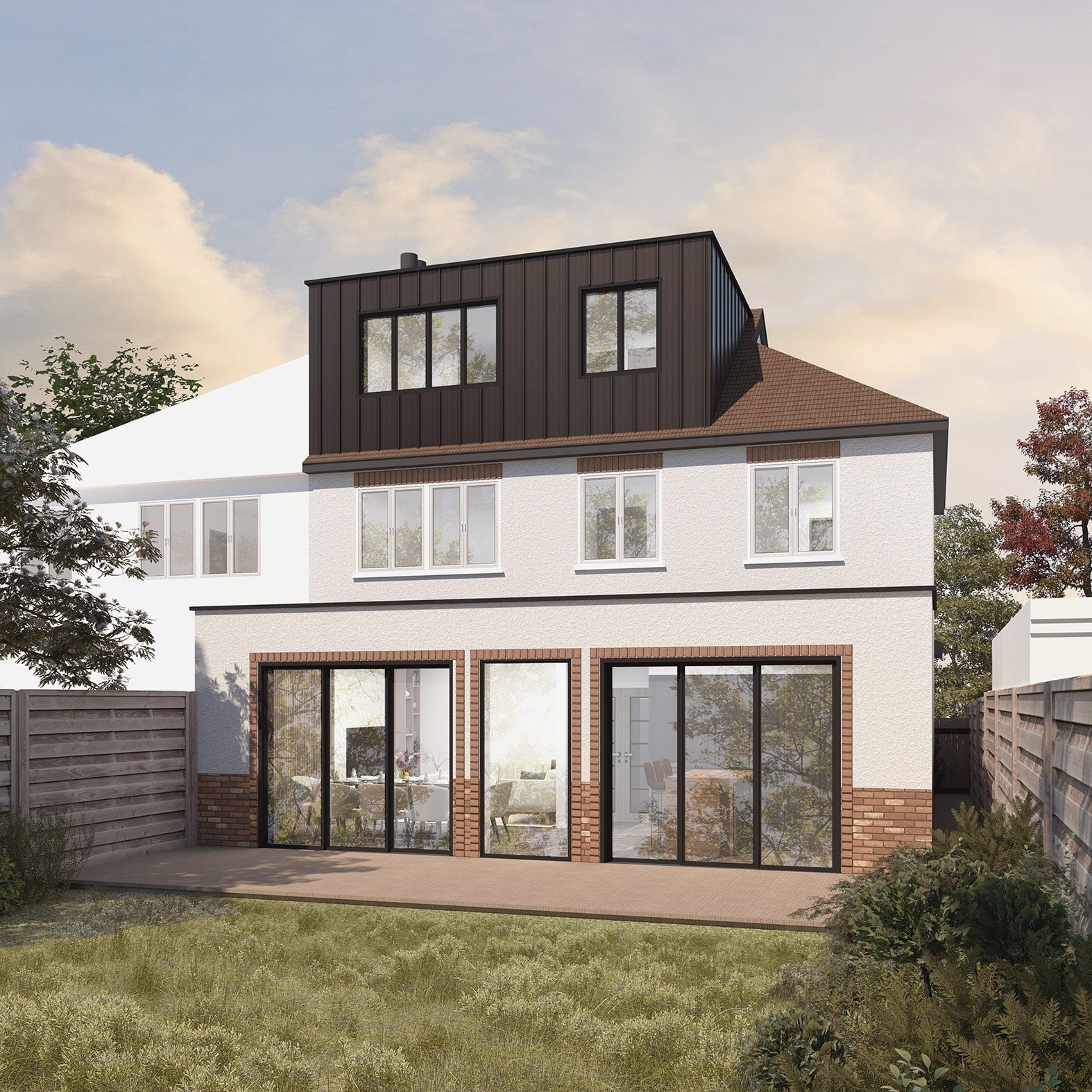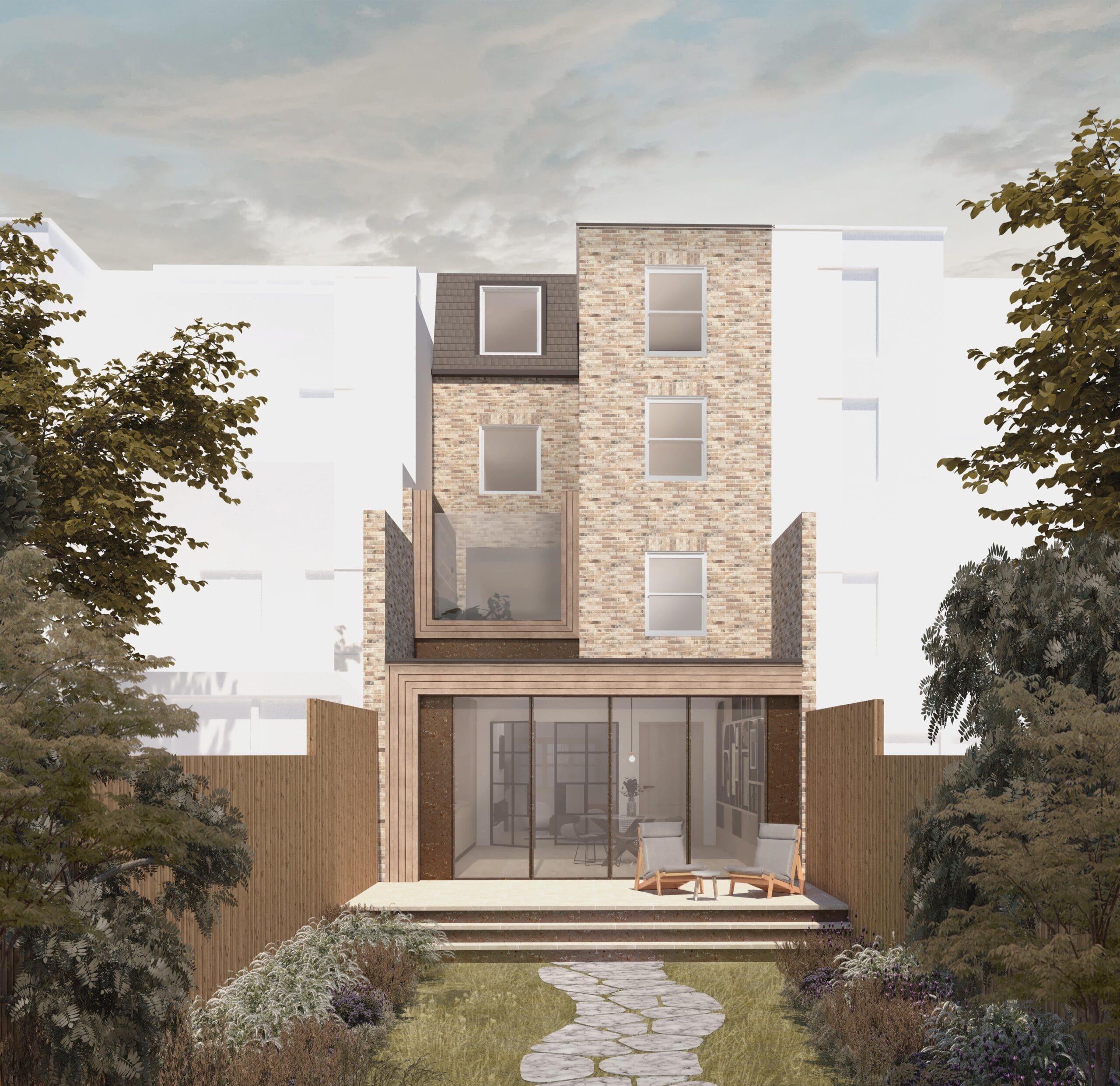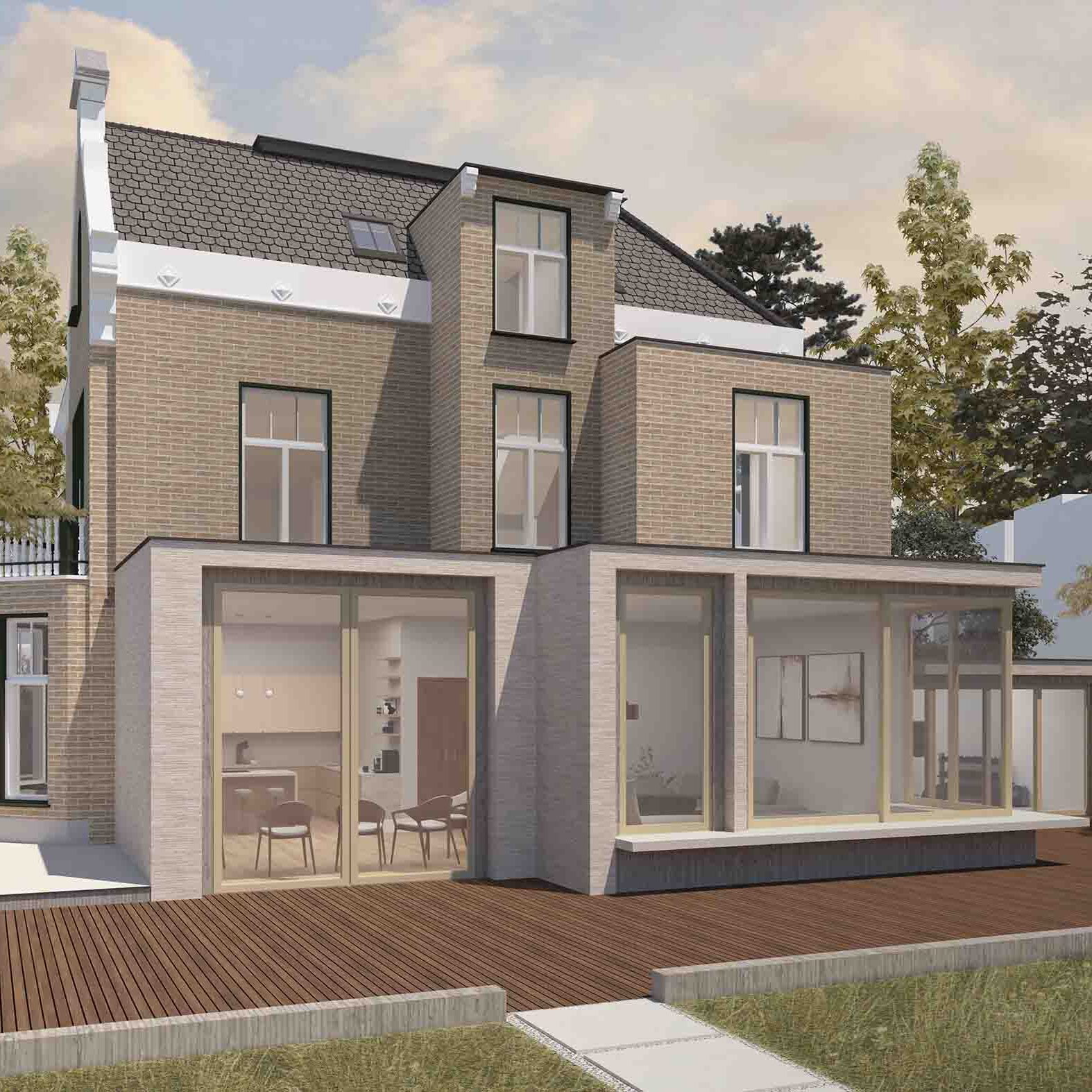Retrospective Planning Permission: All You Need to Know
Have you recently completed a renovation or extension without securing the necessary planning permission? Perhaps you’ve just discovered unauthorised work on a property you’ve purchased? Don’t panic—you’re not alone, and it’s not too late to set things right. Retrospective planning permission is the key to ensuring your project meets legal standards and avoids costly fines or enforcement action. At DeVis Architecture, we specialise in helping homeowners navigate the retrospective planning process with ease. Read on to find out how we can assist you, and get in touch with us today to secure peace of mind for your property.
In This Article
1. Enforcement Notices: When the Council Steps In
2. What to Do When I Get an Enforcement Notice
3. What Is a Retrospective Planning Application?
4. Why Apply for Retrospective Planning Permission?
5. Common Scenarios Requiring Retrospective Planning
6. The Retrospective Planning Permission Process
7. What If My Retrospective Application Is Refused?
8. Retrospective Planning Costs and Fees
9. Retrospective Planning Permission for Listed Buildings and Conservation Areas
10. Tips for a Successful Retrospective Planning Application
11. Why Work with an Architectural Consultant?
12. Conclusion: Take Action Now
Enforcement Notices: When the Council Steps In
Many homeowners first realise they need retrospective planning permission when they receive an enforcement notice from their local council. These notices are issued when unauthorised work has been identified and require immediate action. At this stage, you typically have two options: apply for retrospective planning permission or undo the unauthorised work.
Ignoring an enforcement notice can lead to further consequences such as:
- Hefty fines or legal action;
- A demand to demolish or alter the work;
- An instant stop notice, if work is still ongoing;
- Difficulties with selling or re-mortgaging the property in the future.
Submitting a retrospective application quickly after receiving an enforcement notice is often the best way forward.
What to Do When I Get an Enforcement Notice
Receiving an enforcement notice can be stressful, but acting quickly is essential to minimise potential consequences. The notice indicates that your local council has identified unauthorised work on your property and requires immediate action. You’ll typically have two main options: apply for retrospective planning permission to legitimise the work or undo the changes altogether. The key is to respond promptly, as ignoring the notice can result in hefty fines, legal action, or a demand to remove the unauthorised work.
If you’re left asking yourself the above question, here’s what to do if you receive an enforcement notice:
- Read the Notice Carefully: Understand what the council is alleging and the specific work they are questioning.
- Contact DeVis Architecture: Reach out to us immediately for professional guidance on your options and the next steps.
- Gather Documentation: Compile any relevant documents, including planning permissions (if applicable), photographs of the work, and any communications with the council.
- Decide on a Course of Action: Choose whether to apply for retrospective planning permission or to remove the unauthorised work. Consulting with us can help clarify the best option.
- Submit Your Application: If applying for retrospective planning, ensure all necessary drawings and justifications are included in your application.
- Respond to the Council: If necessary, engage with the local authority and keep lines of communication open regarding your application.
At DeVis Architecture, we help you handle enforcement notices swiftly and efficiently. Our expert team will guide you through the retrospective planning application process, ensuring all necessary documents and drawings are in place to maximise your chances of approval. Acting sooner rather than later is crucial, so reach out to us for professional advice and support as soon as you receive an enforcement notice.
What Is a Retrospective Planning Application?
A retrospective planning application is exactly what it sounds like: applying for planning permission after the work has already been completed. Rather than undoing your renovations or extension, you ask the local authority to review the completed work and give formal approval.
This process is often used when homeowners inadvertently carry out work without the necessary permissions, or when assumptions are made that the project would fall under Permitted Development Rights but doesn’t, for example, a 3 meter house extension in a conservation area. It’s not uncommon in London or Surrey, where homeowners may assume their extension or renovation doesn’t need planning permission, especially in areas with large properties like Weybridge or Richmond. However, rules can vary widely depending on the type of property, what is and isn’t original, and the location—conservation areas, green belt land, and listed buildings all have stricter regulations.
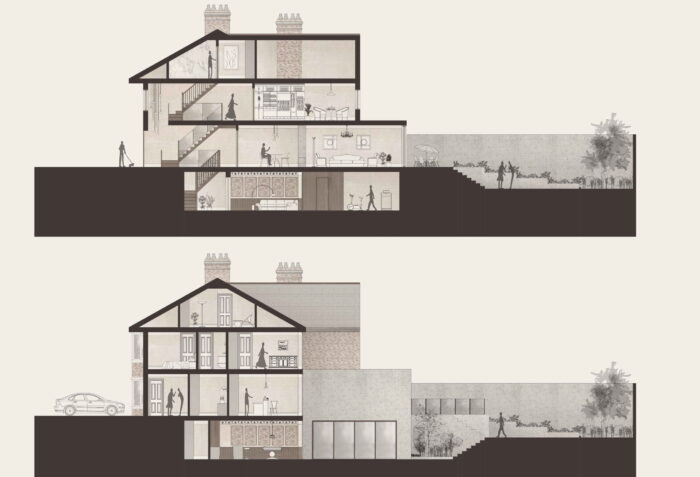
Planning Application Drawings – Monument House
Why Apply for Retrospective Planning Permission?
While it can be tempting to avoid the application process altogether, failure to obtain proper permission could lead to long-term problems. For example, if the local authority decides the completed work doesn’t meet planning regulations, they could issue an enforcement notice, requiring you to undo or alter the extension. This is not only costly but also stressful.
Additionally, not having the correct planning approval can create complications if you ever decide to sell your property. Many potential buyers will request proof of planning permission for major works, and not having it could jeopardise the sale or drastically reduce the value of your home. In areas like Oxshott and Coombe, where properties often fetch high prices and more in-depth surveys are requested, this could mean the difference between a smooth transaction and a stalled or cancelled sale.
Common Scenarios Requiring Retrospective Planning
One of the most common projects we encounter is the single-storey extension, which often seems straightforward but can sometimes exceed Permitted Development rights and end up needing retrospective planning permission. However, other types of home improvements or larger extensions may also require planning permission—sometimes only discovered after the work has begun or even been completed. Below are some of the common scenarios where homeowners may need to apply for retrospective planning permission:

The Retrospective Planning Permission Process
Submitting a retrospective planning application is similar to the standard planning process. Here’s what to expect:
- Submit Your Application: You’ll need to provide detailed drawings and explanations of why the completed work should be approved. In your application, there will be a section to tell the LPA when you started & completed (if applicable) the work.
- Consultation Period: The local authority will review your application, including consultation with neighbours or relevant parties.
- Decision: After considering all factors, the council will either approve or refuse your retrospective application. The process typically takes from 8-12 weeks from submission.
Bear in mind that applying for retrospective permission doesn’t guarantee approval. The council may still request alterations or even the removal of unauthorised work.

Screenshot of Application Section – Planning Portal
What If My Retrospective Application Is Refused?
If your retrospective application is refused, you still have options:
- Appeal the decision: You can appeal to the Planning Inspectorate if you feel the decision was unjust.
- Make alterations: Adjust your completed work to comply with regulations and resubmit your application.
- Remove the work: In worst-case scenarios, the local authority may insist on the removal of unauthorised structures.
If you’re concerned about a potential refusal, seek professional advice to explore your options.
Retrospective Planning Costs and Fees
The cost of a retrospective planning application is usually the same as a regular application. However, dealing with unauthorised work can come with additional costs, especially if changes or legal advice are needed.

Retrospective Planning Permission for Listed Buildings and Conservation Areas
If your property is a listed building or located in a conservation area, the retrospective planning process can be even more stringent.
Any alterations that affect the character of a listed building—such as replacing windows, doors, or structural changes—require Listed Building Consent, and people do not usually realise that any work both internally and externally, requires this to be granted. Similarly, changes to properties in conservation areas need to comply with additional guidelines designed to preserve the local character.
In these cases, it’s crucial to consult with professionals experienced in handling complex planning applications to avoid further complications.
Tips for a Successful Retrospective Planning Application
While applying for retrospective planning permission can feel daunting, there are several strategies you can employ to enhance your chances of approval. Here are some insider tips to keep in mind:
- Gather Comprehensive Evidence: The more evidence you provide to support your application, the better. This can include photographs of the completed work, documents showing compliance with existing planning & building regulations, and any previous correspondence with your local authority.
- Engage with Local Planning Policies: Familiarise yourself with your local planning policies and how they apply to your specific project. Understanding these regulations can help you tailor your application to meet the requirements, ultimately making it more likely to gain approval.
- Be Open to Amendments: If feedback suggests changes to your work, don’t view it as a setback. Instead, be willing to adapt your project to fit within the council’s guidelines. This flexibility can often lead to a smoother resolution.
- Consult with Professionals: As mentioned, working with an architectural consultant can make a world of difference. Not only do we understand the complexities of the planning process, but we can also provide invaluable insights and support throughout the entire application.
Why Work with an Architectural Consultant?
Navigating the retrospective planning process can be tricky, especially for large or complex projects. This is where a professional architectural consultant can make a significant difference. At DeVis Architecture, we specialise in handling retrospective planning applications for clients across London, Greater London, and the Home Counties. Whether you need help with drawings, regulations, or liaising with the local authority, we’re here to guide you every step of the way. Here are some common mistakes to watch out for before applying:
- Assuming Permitted Development: Don’t assume your project is automatically permitted. Always double-check with your local planning authority.
- Delaying Your Application: Acting quickly, especially after receiving an enforcement notice, is essential to avoid fines.
- Not Seeking Professional Help: Planning rules can be complicated, particularly for listed properties or properties in conservation areas.
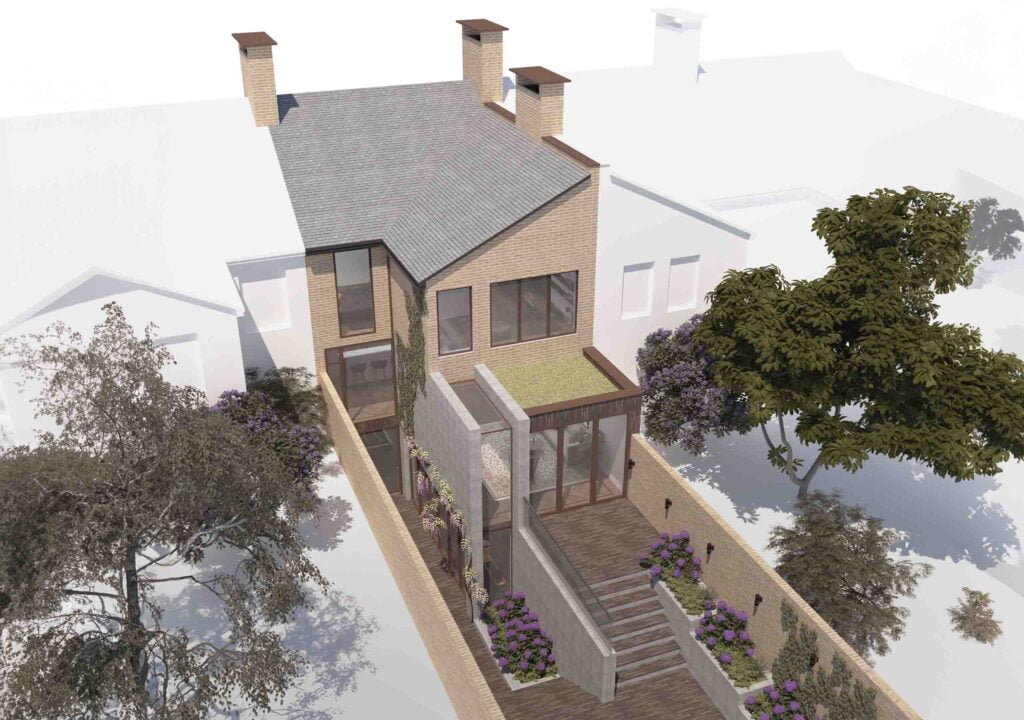
Basement & Rear Extension Wandsworth – Monument House
Conclusion: Take Action Now
If you’ve realised that your project requires retrospective planning permission, taking swift action is crucial to avoid enforcement notices or legal action. Submitting a retrospective planning application can be a straightforward way to resolve unauthorised works and ensure compliance with local regulations. For homeowners in London and beyond, working with an experienced architectural consultancy like DeVis Architecture will make the process smoother and more manageable.
The best way to avoid the stress of a retrospective planning application is to consult with professionals before you begin any work. An architectural team like ours at DeVis Architecture can help you navigate the complexities of local planning laws and advise you on whether your project requires full permission, falls under permitted development, or might face special restrictions, such as those found in conservation areas or green belts.
If you find yourself in a situation where work has already been done, enlisting a professional to handle the retrospective application can greatly enhance your chances of success. Contact us today to get started!



